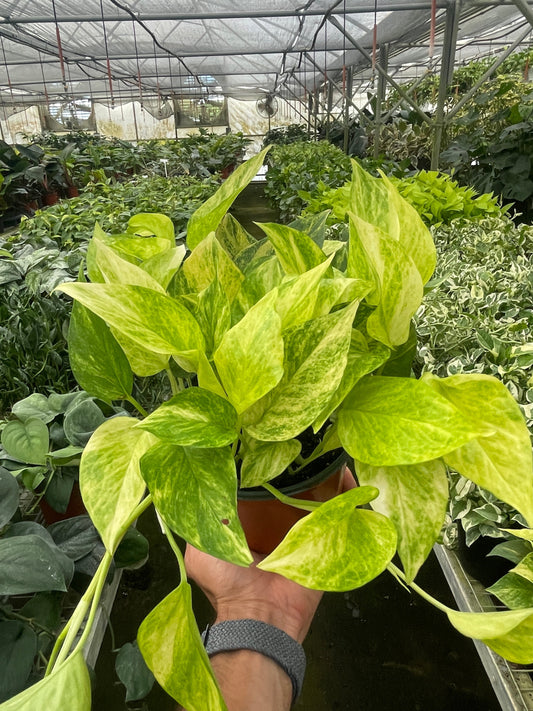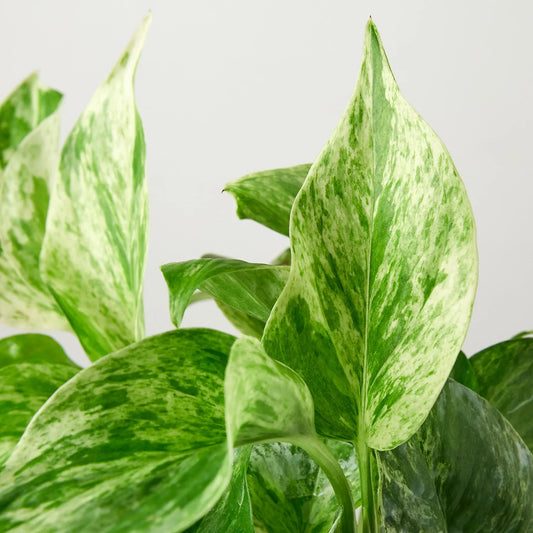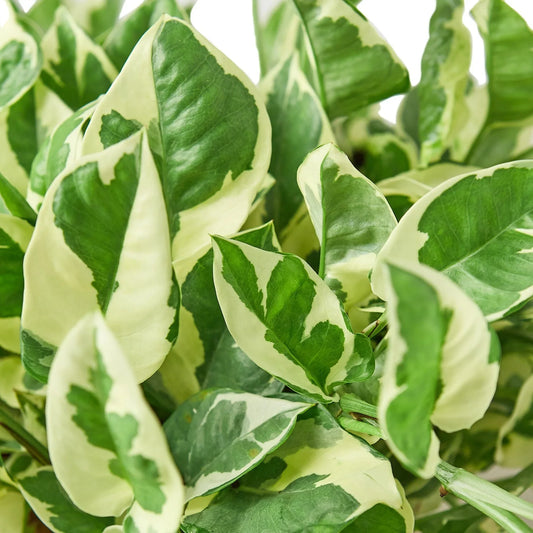The Spiderwort Growth Stages: From Seed to Full-Grown
Cafe Planta Team
Spiderwort plants, often admired for their vibrant colors and easy-going nature, are a delightful addition to any plant lover's collection. These charming plants provide a lively touch to interiors, and understanding their growth stages from seed to maturity can be a rewarding endeavor for anyone keen on nurturing them.
In this article, we'll walk through each stage of the spiderwort's growth, sharing tips and insights on how to care for them at every step. From sowing seeds to watching them flourish into full-grown beauties, you'll learn how to support their journey and create a thriving environment for your spiderworts.
Starting with Spiderwort Seeds
The journey of the spiderwort begins with its seeds. If you've decided to grow your spiderwort from scratch, you're embarking on a fascinating process. These seeds are relatively small and need special attention to ensure successful germination.
To start, you'll want to gather a few materials:
- Spiderwort seeds
- Seed-starting mix
- Small pots or seed trays
- Plastic wrap or a humidity dome
Fill your pots or trays with the seed-starting mix, which is crucial for providing the right balance of nutrients and moisture. Place the seeds on top of the mix and lightly cover them with a thin layer of the same mix, ensuring they aren’t buried too deep. This helps them receive enough light for germination.
Once planted, cover the pots with plastic wrap or use a humidity dome to maintain moisture levels, which is essential for seed sprouting. Place them in a warm spot with indirect sunlight. Patience is key here, as germination may take anywhere from one to three weeks.
Seedling Care and Early Growth
Once your seeds have sprouted, you'll notice tiny seedlings making their debut. This stage is critical, as seedlings are delicate and require gentle handling. You'll want to ensure they receive the right amount of light and moisture.
Position your seedlings in a spot where they can enjoy bright, indirect light. Direct sunlight can be too harsh and may scorch these young plants. If you’re growing them indoors and natural light is scarce, consider using grow lights to provide the necessary illumination.
Watering is another important aspect. Seedlings need consistent moisture, but overwatering can lead to root rot. A simple trick is to let the soil surface dry slightly between waterings. Using a spray bottle for misting can help keep the soil evenly moist without drenching it.
As the seedlings grow, they will develop their first true leaves, a sign that they’re ready for more space. Transplant them into larger pots with a well-draining potting mix to support their developing root system.
Transitioning to Young Plants
As your seedlings grow into young plants, they begin to exhibit more of the characteristics that make spiderworts so beloved. During this phase, you'll start to see more leaves and the beginnings of their signature vibrant colors.
At this point, it’s important to focus on nutrition. Spiderworts benefit from a balanced, all-purpose fertilizer. Feeding them every four to six weeks can help support their growth. Be careful not to over-fertilize, as this can lead to salt buildup in the soil, which might harm the plant.
Light is still crucial during this phase. If your spiderworts are indoors, ensure they have access to bright, indirect light. Outdoor spiderworts can enjoy partial shade. Remember, their leaves are sensitive to intense sunlight, which can cause browning.
It's also a good time to start thinking about the plant's shape. Pinching back new growth can encourage bushier growth and prevent the plant from becoming leggy. This simple maintenance task can make a big difference in how your spiderwort looks as it matures.
Establishing Mature Growth
As your spiderwort plants continue to grow, they enter the mature stage. This is where they really start to shine with their lush foliage and, eventually, stunning blooms. Mature spiderworts are relatively low maintenance, but they still appreciate a bit of attention.
Regular watering is essential, but as with the earlier stages, it's crucial not to overwater. Allow the top inch of soil to dry out between watering sessions. This helps prevent root rot and keeps your spiderwort healthy.
In terms of light, mature spiderworts tend to adapt well to various lighting conditions. However, they thrive best in bright, indirect light. If you notice your plant becoming leggy, it might be reaching for more light, so consider adjusting its position.
At this stage, you may also start to see flowers. Spiderworts typically bloom in late spring to early summer, displaying vibrant purple, pink, or white blossoms. Deadheading spent blooms can encourage more flowers and keep the plant looking tidy.
Maintaining Health and Vigor
Keeping your spiderwort in peak condition involves a mix of regular care and occasional troubleshooting. Like any plant, spiderworts can face challenges such as pests or diseases, but with a proactive approach, these issues can be managed effectively.
Common pests include spider mites and aphids. If you notice any unwelcome visitors, try washing them off with a gentle spray of water or using insecticidal soap. Regularly inspecting your plants can catch infestations early, making them easier to handle.
Fungal issues, like leaf spot, can also occur, especially if your plants are kept in overly damp conditions. Ensuring good airflow around your spiderwort and avoiding water on the leaves can help prevent these problems.
Pruning is another key aspect of maintaining your spiderwort’s health. Trim away any dead or yellowing leaves to keep the plant looking fresh and to prevent disease spread. This also encourages new growth, helping your spiderwort stay lush.
Repotting and Propagation
As spiderworts grow, they may eventually outgrow their pots. Repotting is a straightforward task that can rejuvenate your plant and provide more space for root expansion. A good rule of thumb is to repot every couple of years or when you notice roots emerging from the drainage holes.
When repotting, select a pot that's slightly larger than the current one, and ensure it has drainage holes to prevent waterlogging. Use a fresh potting mix to give your spiderwort a nutrient boost.
Propagation is another exciting aspect of spiderwort care. These plants can be easily propagated through division or cuttings. For division, simply split the root ball into smaller sections and pot them individually. For cuttings, snip a healthy stem below a node and place it in water or soil to encourage root development.
Both methods are effective, and they allow you to share your spiderwort with friends or expand your collection.
Designing with Spiderworts
Spiderworts are not just easy to care for; they're also versatile in home decor. Their striking foliage and flowers make them a great choice for adding a splash of color to any room. Whether you're an experienced designer or just someone who loves plants, incorporating spiderwort into your home is a fun way to express your style.
These plants do well in hanging baskets, where their trailing stems can create a beautiful cascade. They also look fantastic as part of a mixed arrangement with other houseplants, offering contrast and texture.
For those who enjoy themed decor, spiderworts can complement a jungle or bohemian style beautifully. Experiment with different pot styles and colors to see what best matches your personal aesthetic.
Remember, the key to using spiderworts in design is to let their natural beauty shine. Whether they're the star of the show or part of a larger ensemble, these plants have a knack for making any space feel more vibrant and alive.
Common Issues and Solutions
Even the most experienced plant parents face challenges now and then. Spiderworts are hardy, but they aren’t immune to problems. Fortunately, most issues can be resolved with some patience and care.
If your spiderwort's leaves are turning yellow, it could be a sign of overwatering or a lack of nutrients. Check the soil moisture and adjust your watering schedule as needed. A balanced fertilizer might also help if nutrient deficiency is suspected.
Leggy growth often indicates insufficient light. Moving your plant to a brighter location or providing supplemental lighting can help encourage more compact growth.
For those dealing with pest infestations, isolation is key. Quarantine affected plants to prevent the spread, and use gentle pest control methods to rid your spiderwort of unwelcome insects.
Remember, plants are resilient, and with a little attention and adjustment, your spiderwort can bounce back from most setbacks.
Final Thoughts
Caring for spiderworts from seed to full-grown is a delightful journey that offers both challenges and rewards. By understanding their needs at each stage, you can enjoy the beauty and vibrancy these plants bring to your home.
At Cafe Planta, we're passionate about helping you succeed in your plant journey. Whether you're looking for unique plants, care accessories, or just want to chat about your plant babies, we're here for you. Feel free to reach out via email or connect with us on Instagram. Let's grow together!



















